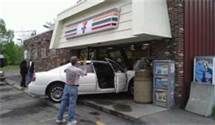mtlogcabin
SAWHORSE
Gas meters located on the side of building. Property next door is a refueling island for large trucks. There is a 6" curb and 10 feet between the vehicle lane and the gas meters. The owner of the building has been given notice by an insurance inspector to install vehicle impact bollards to protect the 3 gas meters.
Now I believe it is a good idea in this situation but I cannot find anything in the I-Codes that would have required them 4 years ago (06 codes) when the building was built.
Does NFPA have any regulations with regards to gas meters or piping located 10 ft from a driving lane?
The powers to be want to know why we did not require them at time of construction.
Now I believe it is a good idea in this situation but I cannot find anything in the I-Codes that would have required them 4 years ago (06 codes) when the building was built.
Does NFPA have any regulations with regards to gas meters or piping located 10 ft from a driving lane?
The powers to be want to know why we did not require them at time of construction.

